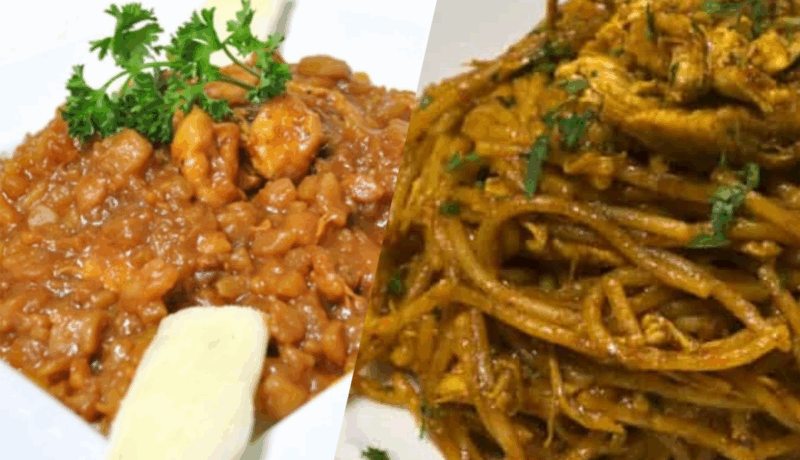
Ica cuisine: heritage, flavor, and fusion.
The cuisine of Ica actively expresses the history of southern Peru by combining influences from the Quechua, Spanish, Afro-Peruvian, and Creole peoples. The region, situated between the sea, the desert, and fertile valleys, provides an abundance of local ingredients that contribute to a vibrant and traditional cuisine.
Table Of Content
- Carapulcra with dry soup
- Composition of the Dish
- Morusa embodies tradition, flavor, and Afro-Peruvian heritage
- Main Ingredients
- Picante de Pallares: A smooth and flavorful classic from Ica.
- Main Ingredients
- Chupe de Camarones: Tradición Costeña con Sabor Profundo
- Main Ingredients
- How is it served?
- Cau Cau de Mariscos: A marine condiment with a Peruvian soul
- Main ingredients
- How is it served?
- Pachamanca a la iqueña: an Andean tradition at the heart of the valley
- Typical ingredients for Ica-style pachamanca include
- How is it served?
- Green pallares with Seco
- Traditional Ingredients
- How is green pallar traditionally served with secco?
- Pork rinds from Ica
- Traditional ingredients
- Traditional style
Typical dishes from Ica
Carapulcra with dry soup
Origin and Cultural Significance
Carapulcra embodies a vibrant cultural fusion. It originates from a blend of Andean traditions that utilize dried potatoes and local herbs, Afro-Peruvian contributions that introduce unique cooking methods and incorporate peanuts and meats, and European influences that add noodles and spices. People serve carapulcra as the quintessential celebratory dish at weddings, baptisms, religious festivals, family gatherings, and patron saint festivals in Ica, Chincha, and other areas of southern Peru.
Composition of the Dish:
Carapulcra.
Base: Chefs rehydrate and slowly cook dried potatoes.
Traditionally, cooks use pork or chicken for the meat, though they may include both.
They season the dish with ají panca, ají mirasol, garlic, onion, ground peanuts, and spices such as cumin, pepper, and cloves.
To intensify the flavor, they may add meat broth and wine or chicha de jora to the broth.
Dry Soup:
Noodles: Cooks prepare long noodles and cook them until they absorb all the flavor.
They season the dish with achiote, onion, garlic, blended basil, and yellow chili pepper.
Depending on the amount of basil or achiote used, the color can become reddish or green.
They typically serve it with chicken or pork.
The Quechua word “carapulcra” comes from “qala purk’a,” which means “hot stone stew.” This name refers to the traditional cooking method that involves using hot stones in pits, similar to pachamanca. Today, cooks prepare the dish in a pot, but they still use the name as a legacy.
Morusa embodies tradition, flavor, and Afro-Peruvian heritage
Morusa is a traditional Ica dish that chefs prepare using pallares, a white legume commonly grown in the valley. They serve it as a creamy purée of pallares accompanied by shredded pork or beef, onions, and a traditional dressing. This popular dish holds great cultural significance for rural areas and Afro-Peruvian communities.
Main Ingredients:
Soak and cook dried or green lima beans.
Shred pork or beef (or use chicken).
Chop red onion.
Mince garlic and yellow chili pepper, and prepare panca chili pepper.
Heat vegetable oil or lard.
Season with salt, pepper, and cumin.
For creaminess, add milk or fresh cheese if desired.
Picante de Pallares: A smooth and flavorful classic from Ica.
This creamy stew features green or tender lima beans cooked with yellow chili peppers, garlic, onion, and milk. Cooks add fresh cheese to give it a smooth texture and intense flavor. Despite its name, it is not always spicy; the “spicy” refers to the seasoned stew, not necessarily the heat.
This dish serves as a signature meal of the Ica countryside, particularly in rural areas, and it showcases the wise and tasty use of a regional staple: the Ica lima bean.
Main Ingredients:
– Use green or tender lima beans.
– Chop red onion.
– Mince garlic.
– Add yellow chili pepper (fresh or in paste form).
– Pour in evaporated or fresh milk.
– Crumble fresh cheese.
– Heat vegetable oil.
– Season with salt, pepper, and cumin.
– Optionally, sprinkle a little oregano or huacatay.
Chupe de Camarones: Tradición Costeña con Sabor Profundo
Chupe de camarones features a thick, creamy, and highly nutritious soup made with river shrimp, yellow potatoes, eggs, rice, fresh cheese, milk, and aromatic herbs such as huacatay. This true gem of southern Peruvian cuisine originates from Arequipa, though cooks in Ica also prepare a tasty version, especially in areas near the river and during fishing season.
Main Ingredients:
– Use fresh river shrimp (whole or peeled).
– Prepare yellow or white potatoes.
– Cook rice.
– Poach or beat one whole egg.
– Shell corn.
– Crumble fresh cheese.
– Pour evaporated milk.
– Incorporate ají panca and ají amarillo peppers.
– Add onion, garlic, salt, and pepper.
– Season with herbs: oregano and huacatay.
How is it served?
The chef serves it in a deep dish and garnishes it with whole shrimp on top.
They prepare it with a Creole sauce made from onions, lemon, and chili peppers.
Some versions include fried plantains or chopped chili peppers on the side.
Cau Cau de Mariscos: A marine condiment with a Peruvian soul
Seafood Cau Cau features a thick stew that combines chopped seafood, such as squid, octopus, mussels, and shrimp, with yellow potatoes and a Creole sauce made from yellow chili peppers, garlic, and onions. The stew boasts a creamy texture and delivers an intense, slightly spicy flavor.
Chefs adapted this seafood version of the classic Lima-style cau cau, originally made with tripe, for the southern Peruvian coast, where high-quality seafood is abundant.
Main ingredients:
– Combine assorted seafood, including squid, octopus, mussels, shrimp, and clams.
– Dice yellow potatoes.
– Add yellow chili pepper, either fresh or in paste form.
– Incorporate red onion.
– Mix in ground garlic.
– Use turmeric or saffron for color.
– Optionally, add mint or oregano, depending on the region.
– Season with salt, pepper, and cumin.
– Heat vegetable oil.
– Optionally, pour in white wine or fish stock.
How is it served?
They serve it in a deep or flat dish and garnish it with parsley or ají limo.
They serve it with:
– White rice.
– Boiled or fried yuca.
– Creole sauce (onion, lemon, and ají).
Optionally, they can add tostones or fried plantains for an Afro-Peruvian coastal touch.
Pachamanca a la iqueña: an Andean tradition at the heart of the valley
The Ica pachamanca showcases a local adaptation of the Andean cooking ritual by using seasoned meats and farm products. Cooks prepare it with coastal valley ingredients, such as pork, chicken, sweet potatoes, beans, and corn. They cook it in an earth oven with hot stones.
Although it originates from the Andes, the Ica pachamanca develops its own personality. It leans towards coastal flavors, featuring a sweeter taste and local spices and products from the fertile valley.
Typical ingredients for Ica-style pachamanca include:
Meats (previously marinated):
Ica commonly uses pork as the main meat.
People also use chicken.
Occasionally, they use goat or beef.
Farm products:
Farmers grow sweet potatoes.
Seasonings:
Chefs use garlic, salt, cumin, and pepper.
They add ground ají panca and ají mirasol peppers.
For the marinade, you can use chicha de jora or vinegar.
Cooks incorporate huacatay, chincho, and oregano.
Optionally, you can add dark beer or wine for marinating.
How is it served?
You can choose between huacatay chili pepper or ground rocoto pepper.
For drinks, they offer chicha de jora, wine, or pisco.
Green pallares with Seco
When you visit Ica, you will discover more than just deserts, vineyards, and mysterious lines. You will also enjoy one of the region’s most characteristic and delicious dishes: “Green pallares con seco,” a unique combination of tradition, flavor, and nutrition.
This dish highlights the best of Ica’s Creole cuisine.
Chefs prepare a smooth purée of pallares, a green legume typical of the Ica Valley.
They serve it with a tasty meat stew (beef, goat, or chicken) that they slowly cook with cilantro, chili peppers, and beer or chicha de jora.
Traditional Ingredients:
Although each household has its own version, some common ingredients include:
For the cream of lima beans:
– Fresh green lima beans.
– Evaporated milk.
– Fresh cheese.
– Garlic and onion.
– Optional: basil or cilantro.
For the Seco:
– Cook beef or goat meat.
– Use yellow chili pepper and ají panca.
– Chop onion and garlic.
– Blend cilantro.
– Add dark beer or chicha de jora.
– Season with cumin, salt, and pepper.
How is green pallar traditionally served with secco?
Place a generous portion of pallar cream either on the side or as a base of the plate. Ensure it is hot, thick, and well seasoned.
Position the seco de carne on top of or next to the cream, allowing its juice to enhance the flavor. You can make it with beef, goat, or chicken.
Serve side dishes with white rice, and sometimes include boiled yuca or bread.
Add optional garnishes such as creole sauce, homemade chili sauce, and chopped fresh cilantro for decoration.
Pair the dish with ideal beverages like chicha de jora, pisco sour, or dry wine from Ica.
Pork rinds from Ica
Ica-style pork rinds, a traditional Peruvian dish, chefs prepare by frying pork in its own fat. They commonly serve the rinds with fried sweet potatoes, French bread, and Creole sauce, which cooks make with onion, ají limo chili peppers, lemon, salt, and cilantro. Sometimes, they also serve the dish with an onion and mint salad, adding a fresh, aromatic touch.
The pork rinds feature a crispy exterior and juicy interior with a deep, slightly salty flavor. This energy-packed, tasty dish is perfect for starting the day off right.
Traditional ingredients:
Use pork (preferably ribs, bacon, or the leg).
Add pork fat or lard.
Minced garlic enhances the flavor.
Season with salt.
Optionally include cumin and pepper.
Prepare yellow sweet potatoes.
Use French bread or bolillo.
Chop red onion.
Squeeze lemon juice.
Incorporate aji limo pepper.
Add mint if desired.
Traditional style:
Chefs fry pork pieces until crispy.
They prepare fried sweet potatoes.
Cooks make Creole sauce using onions, chili peppers, and lemon.
They sometimes serve the dish with lemon and lettuce.
On bread (with pork rinds):
They stuff French bread with pork rinds, fried sweet potatoes, and Creole sauce.
People enjoy this dish as a popular breakfast option.
In the Ingenio – Nazca region:
They serve pork rinds with yuca or boiled potatoes.
Cooks cook the pork rinds over huarango wood to infuse them with a smoky flavor.
This dish is ideal for breakfast, lunch, or food fairs.
“Rainbow Mountain in Peru is a breathtaking natural wonder, known for its vibrant, colorful stripes that look like they’ve been painted by nature itself.”


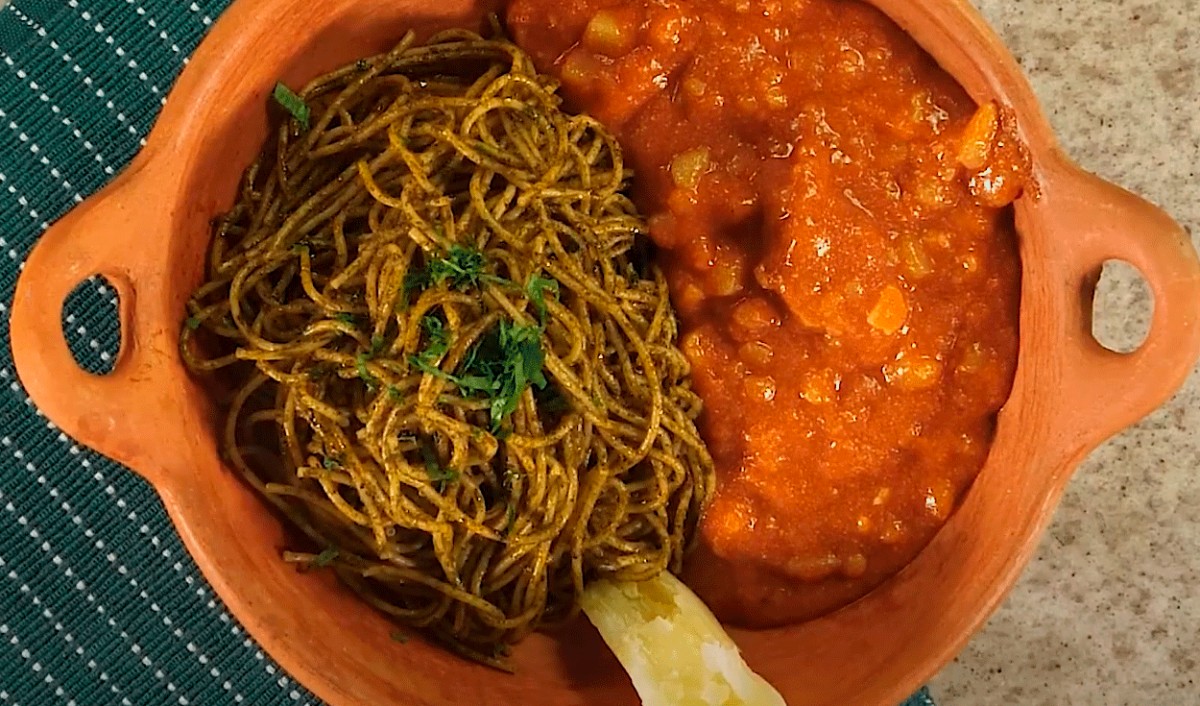

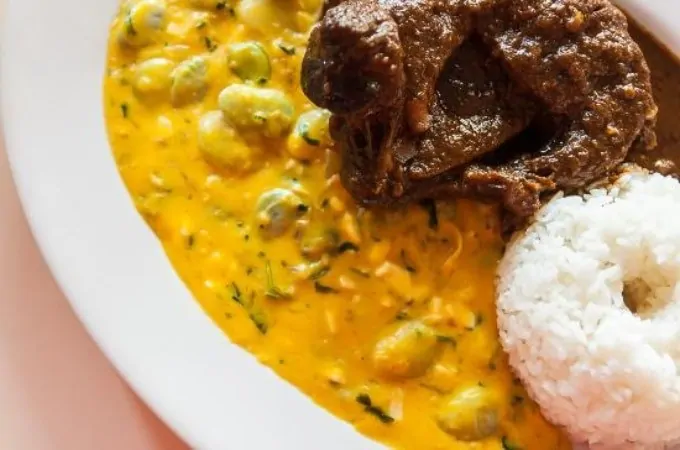
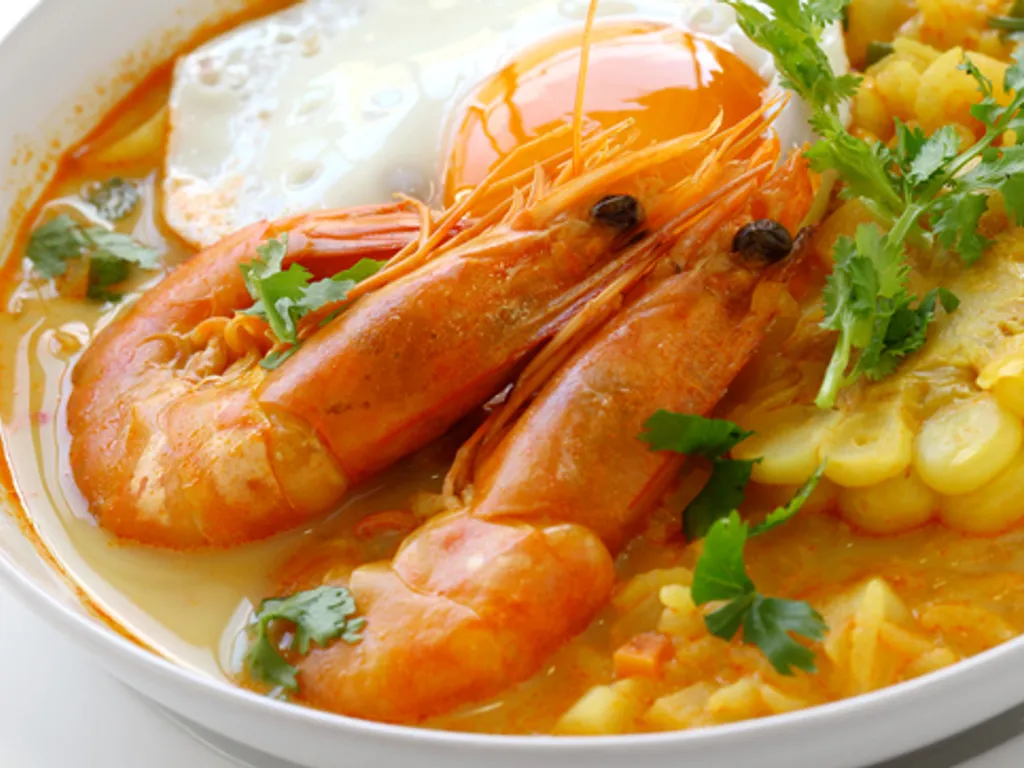

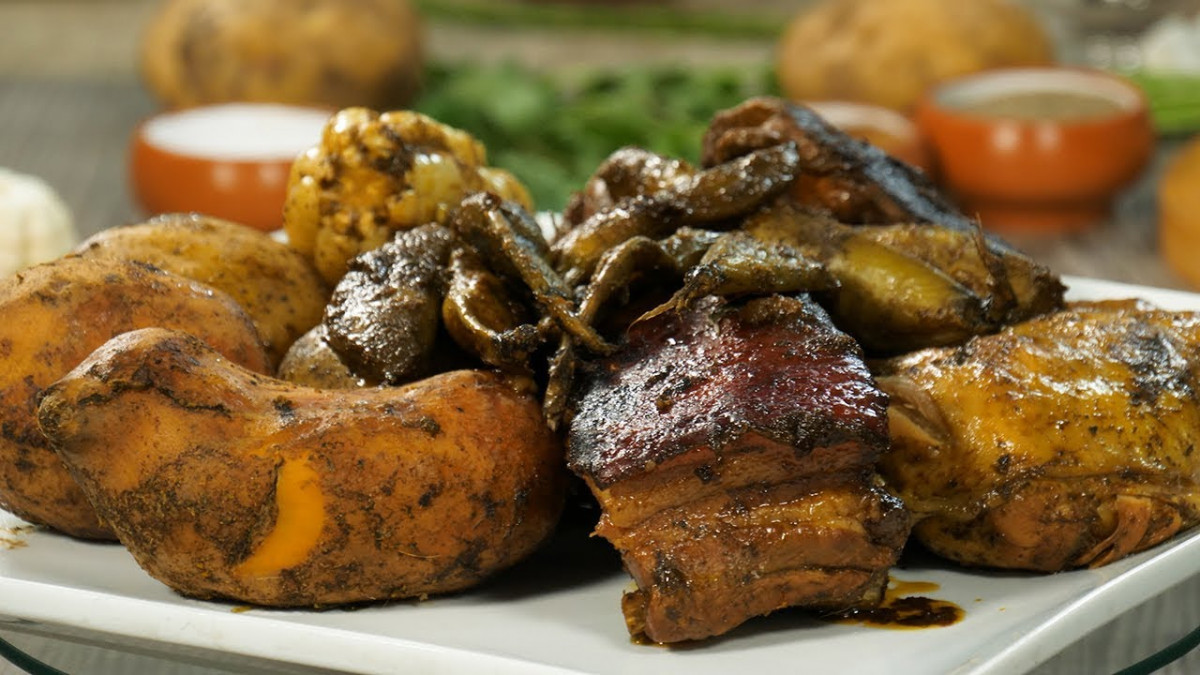
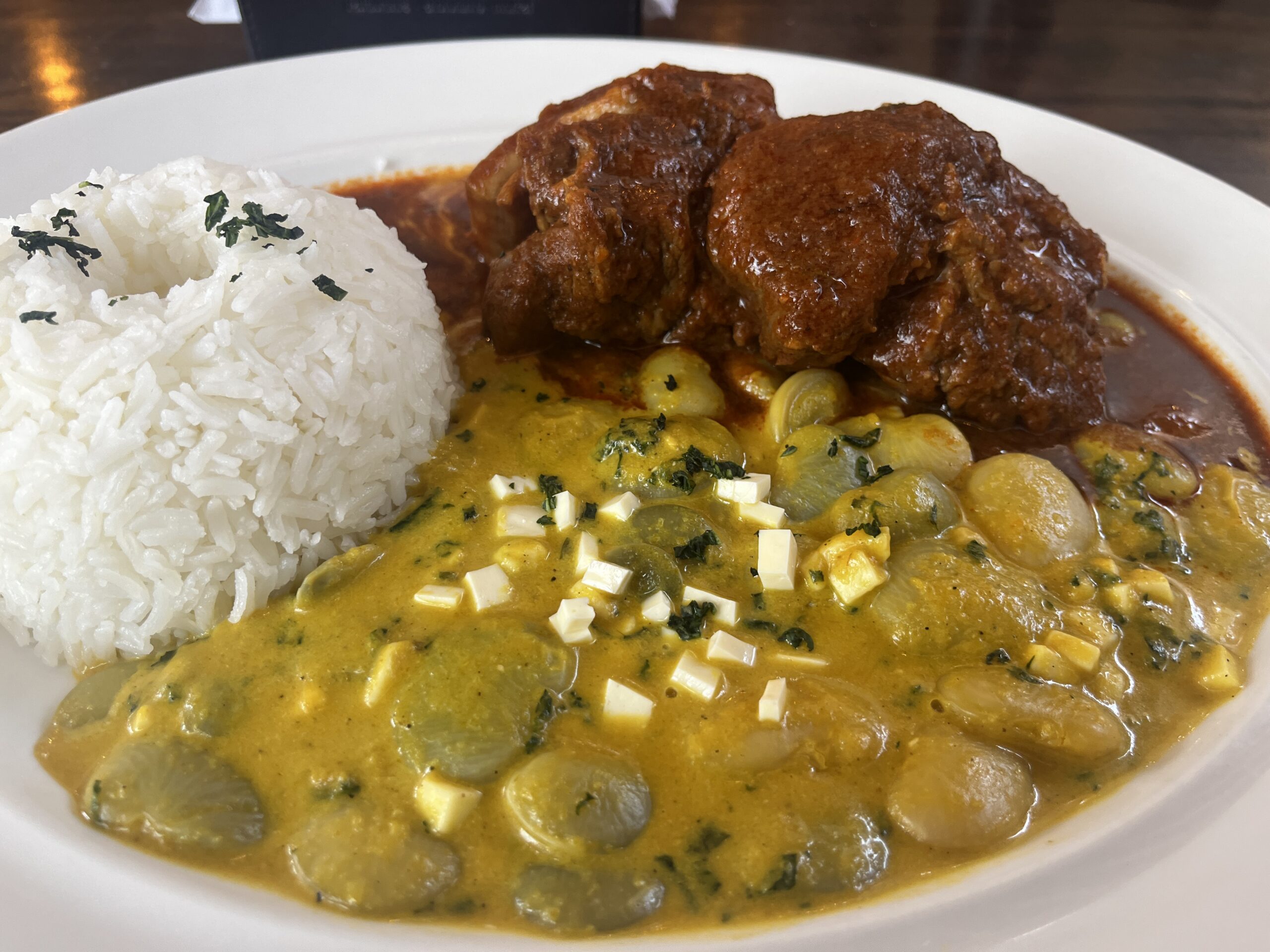
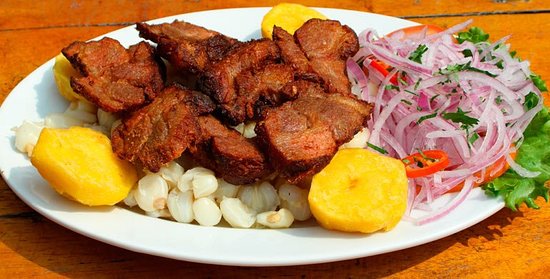


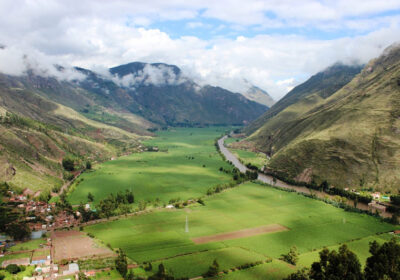


No Comment! Be the first one.